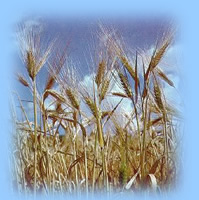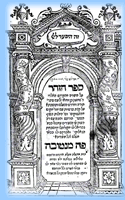 |
 |
Barley |
Sefer
Zohar |
From the day after the Sabbath, the day that you bring the sheaf of wave-offering*, you shall keep count until seven full weeks have elapsed: you shall count fifty days until the day after the seventh week, then you shall bring an offering of a new grain to the Lord... On that same day you shall hold a celebration, it shall be a sacred occasion for you ... (Lev. 23:15-21)
An omer is a measure of barley and in Biblical times believers were required to offer an omer of barley to the Temple in Jerusalem on the second day of Passover. Fifty days later the first of the wheat harvest would be offered on the occasion of Shavuot (‘weeks’). In the passage quoted above, the ancient Israelites are commanded to mark the time between the barley and wheat offerings by counting the days: it is from this that a mitzvah** called sefirat ha’omer (‘counting of the omer’) has derived. Every night during this period Jews recite a blessing and state the count of the omer in both weeks and days, an act which serves to remind them of the link between Passover—which commemorates the Exodus—and Shavuot, which honours the giving of the Torah.
Lag b’Omer literally means ‘33rd of the Omer’. At the time of the Bar Kochba revolt against the Romans (132-135 CE), a plague killed 24,000 students during the seven weeks between Passover and Shavuot. To commemorate this and other tragedies, partial mourning—weddings, parties and dinner dances are not allowed—is observed during the counting of the omer. However on Lag b’Omer these restrictions are lifted in recognition of the fact that on the 33rd day there was a break in the plague.
Another event associated with this holiday is the death of Rabbi Shimon bar Yochai†, the presumed author of the Zohar, the central work of Jewish mysticism. On the day that he died it is said that he revealed the light of the Torah (Zohar, ‘light, splendour’) to his students, and it is in honour of this that bonfires often play a part in the observance.
Lag b’Omer is a semi-holiday, an interruption in the period of mourning. Festivities are allowed and in Israel, many travel to the grave of Rabbi Shimon bar Yochai in the northern town of Meron. Children often play with bows and arrows on this day as a commemoration of the Bar Kochba revolt.
*In
Jewish ritual, an offering made by waving the object toward the four cardinal
points: The LORD said to Moses, “Speak to the Israelites and
say to them: ‘When you enter the land I am going to give you and
you reap its harvest, bring to the priest a sheaf of the first grain you
harvest. He is to wave the sheaf before the LORD so it will be accepted
on your behalf; the priest is to wave it on the day after the Sabbath.”
(Leviticus 23: 9-11)
**A religious obligation; one of the 613 commandments found in the Torah.
†Shimon
bar Yochai was a student of Rabbi Akiva, the spiritual leader of the Bar
Kochba revolt. He is the presumed author of the Sefer Zohar,
“Book of Splendor”, the classic text of Jewish mysticism.
However other sources claim that it was the 13th century Moses de Leon
who wrote the Zohar in the name of Rabbi bar Yochai.